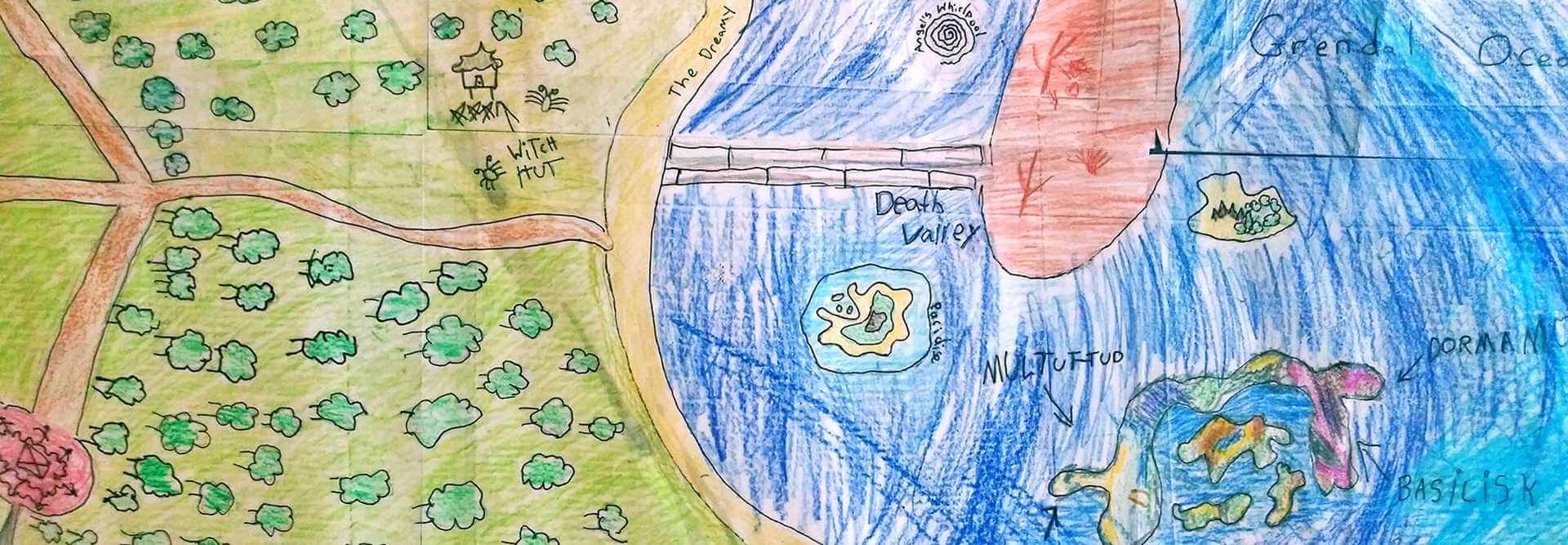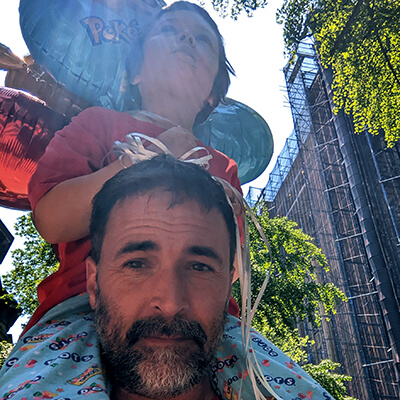In 1979 at the age of four, I was introduced to the role playing game Dungeons & Dragons (D&D) when my oldest brother Gregory came and fetched me and my other older brother Peter to play our first game together. It probably took years for me to play the game by the actual rules, as D&D is a complex game filling pages and pages of books with instructions; however, onward I went into my teenage years hooked on the game, and playing at every opportunity I could. Winter and spring breaks my brothers, our friends, and I would literally lock ourselves away for an entire week and just play and play. Had it been a video game today, adults would have been describing our behavior as an “addiction.”
Peter and I would walk through our adult-led world in secrecy, pointing out opportune points where an archer could guard from a high up window at the mall or remark about some unknown liquid at an adult dinner party as a potion our magic user concocted, in and out of reality, discussing our obsession with D&D together in a beautiful, undercover world that only children are able to see (and perhaps the “saints and the poets,” too, as Thorton Wilder once wrote).
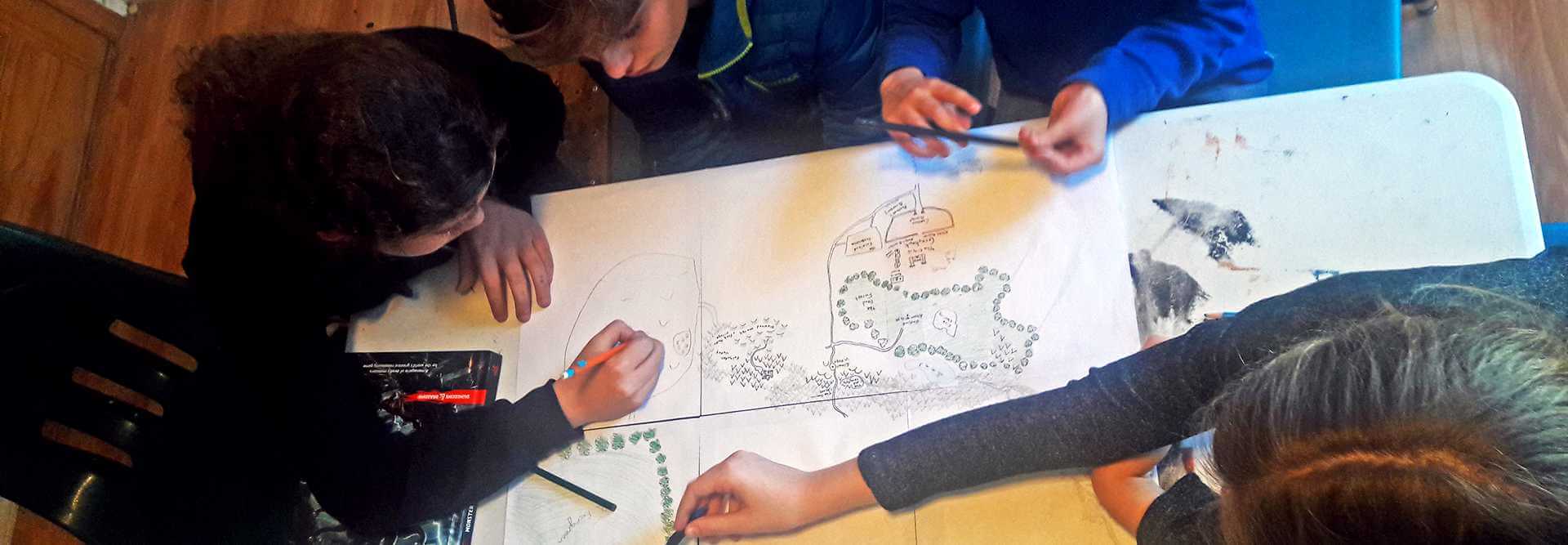
In many ways, D&D was my coping mechanism to get through conventional schooling and an adult-led world I wished to escape. Ironically, I spent my time outside of school with my nose in a book, calculating, researching, and having sophisticated conversations deep in flow with other young people. All of these qualities that school and adults wanted me to have about my studies, I gave to D&D. When I reached my twenties, I used to joke that my real education, as opposed to my twenty-two years of schooling, came from two things: traveling the world and Dungeons & Dragons.
Little did I know at the time, I would build my career in my forties on playing it all over again. I now spend the better part of about three days a week playing D&D and another role playing game, Fairplay, which I discuss a little later. Two years ago, when I started working at Brooklyn Apple Academy, a self-directed homeschooling coop, I began a D&D campaign with a group of kids. We are still “campaigning” on that initial storyline, with many of the original players as well as some new adventurers. These young people and I pack ourselves into a small art room around two folding tables, imagining together worlds of magic, monsters, and treasure. I’ve counted up to thirteen of us huddled at such at a given time. I have witnessed young people who would be diagnosed with ADHD in a conventional school sit at a table for four, five, six hours straight, begging for the day to not end, insisting I eat my lunch while we keep playing. As much as the magic of the game is make-believe, there is real life magic in what role playing games bring to the lives of young people.
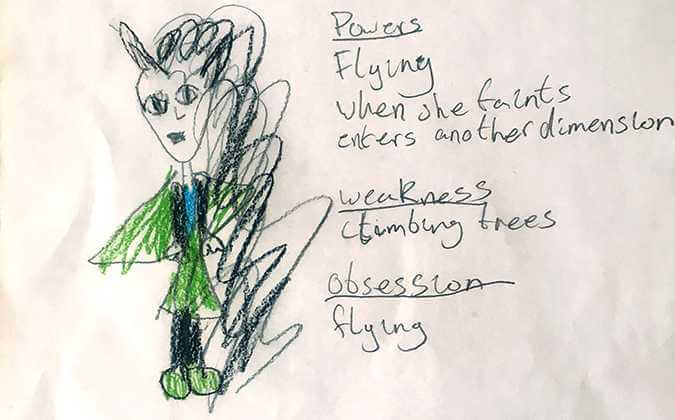
Much like sandbox video games, such as Minecraft, D&D provides a sophisticated structure but minimal set of rules, allowing young people’s imaginations to be uninhibited by the laws of nature or, at least as important, the restrictions of adulthood. Most children have dreams of the house or vehicle they want to build, but few have the resources, ability, and patience to do so in real life. Sandbox games like D&D give children a way to make those dreams a reality by walking into a house and riding on a vehicle of their own creation, with all of their friends witnessing and engaging in the act. In D&D, we can sail an enormous boat of our own creation and hear the wood creak and groan in the fury of a storm we must pass through to get to Fairy Island—intercepted first by a giant serpent that almost crushes us to smithereens (an actual episode we experienced last year!) These moments feel incredibly real, they are experienced together, and they’re taken seriously in the minds of these children (and me).
Structure
It irritates me to no end when I hear misunderstanding adults remark about Self-Directed Education (SDE) spaces, “my child needs structure; they couldn’t be in an environment like that.” To this I typically reply, “Self-Directed Education environments do have a structure—in fact typically more structure than a conventional space. The only difference is that the structure in an SDE space has been created and agreed upon by everyone in it.” Dungeons & Dragons and similar role playing games function similarly with regard to structure. There are house rules for how to play the game, but they’re just a common set of suggestions for how to start. From there, they may be changed to fit any specifications and desires of the group, so long as the group agrees on the change. I have seen these dynamics unfold both within the game and among the gamers themselves.
At the end of last school year, some players in our “Tuesday campaign” complained that other players were not taking things seriously enough, to the detriment of the game. The offenders in turn complained that the others were taking things too seriously and the game was becoming boring. So it was decided that this year we would have two campaigns, a “serious” one on Wednesdays and a not so serious one on Thursdays. The not so serious group grew in demand, and now we also have a Friday campaign, which is perhaps even less serious (or shall we say, more open to dreaming?).
I asked the Wednesday group how they wanted to implement rules for taking the game seriously. In the last three months we’ve had several iterations, but as it stands now, these seven- to fourteen-year-old boys and girls have decided, purely of their own accord, to use a three strike rule. If you don’t pay attention or walk out of the room unannounced or do something else that the consensus agrees is “dumb,” then you get a strike. Three strikes and you’re kicked out of the game for the day. Three days kicked out in a semester and you’re kicked out for the year.
So far we have only had one person kicked out for a day (and I proudly have been given only one strike, for allowing a spell with a 60 foot area effect to impact their characters 120 feet away). They have also decided that we will read from the rule books for the first twenty or so minutes of each day. They choose the passage, and I read it to the group (for the sake of the pre-literate members of our group). We then go over the instructions and discuss how they impact each player. So, for example, when reading up on ability scores we showed Solomon how his rogue uses “finesse” when taking his rapier to a monster, adding a +5 dexterity modifier to the attack. Solomon is ten and, as far as I can tell, would not be caught dead in a math or physics class. But he has memorized every trait of his character and has studied exactly how to use math and physics to best take advantage of his proficiencies in our adventuring.
Imagination
On Fridays, Solomon also joins in sessions of another game, called Fairplay, which draws on and develops different skills in his repertoire. Often he plays a self-invented character named Blobby, a gelatinous cube who strategically shape shifts at will, for example to fit under the cracks of doors in escape or to become a race car for speeding with his friends to the next goal. There are no strikes on Fridays, no rulebooks to be read, and so long as you’re made of jelly, no laws of physics to follow. Solomon enjoys playing seriously and not so seriously, as do many of the other children.
When my brother Peter and I started traveling internationally together decades ago, we wanted to continue to play D&D, but carrying around rule books and a big bag of dice became cumbersome. It was also a bit too out of place (okay, and nerdy) in the British pubs and other such settings we liked to visit. So it was in a British pub, in fact, that we decided to invent our own role playing game, which we entitled Fairplay (after a catch-all phrase a German friend of ours incessantly used at the time to describe anything acceptable to him). We decided we wanted a game as fun and exciting as D&D, but simplified to its most basic form. The rules we created fit on a single piece of paper, and all that is needed to play is a single coin. You can find the rules here and try it for yourself. I now have colleagues and friends at multiple SDE centers and homes playing Fairplay with young people, and I have even ran it as an offering at an Agile Learning Facilitator training.
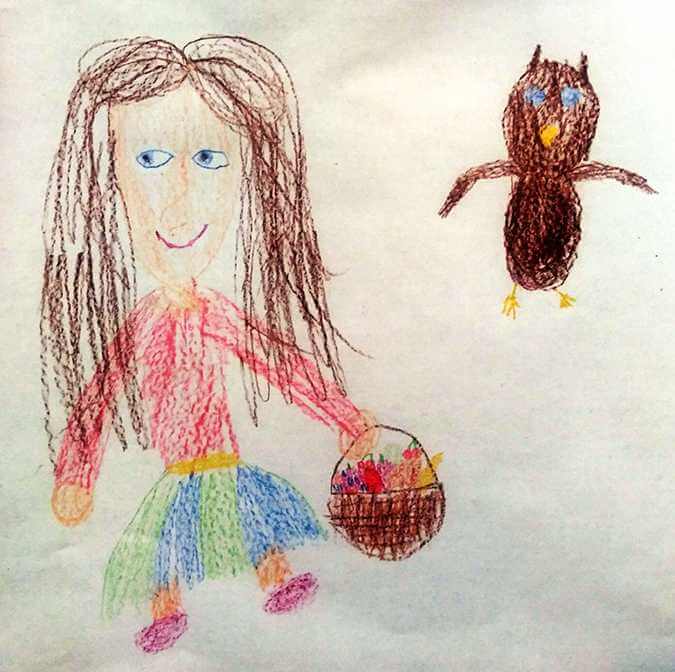
Although Peter and I designed Fairplay for ourselves and to play with other adults, it has proven to be even more successful with young people. In essence, the game allows for a stone-soup-like element of dropping a group of willing individuals into a simple imaginary dimension that they make delicious together. Each person pretends to be a character of their own choosing, from a blob to a stick figure to a speck of dust (my favorite character ever!) They give themselves abilities and weaknesses and a goal to accomplish. The narrative is told in bite sized chunks rotating clockwise. The flip of a coin determines their fates: heads and what you say happens, tails and the Game Master (narrator) chooses some awful alternative, typically based on one’s weaknesses. Bea, for example, always plays a character who hates tomatoes, and so, when she flips tails, quite often a bushel of tomatoes magically gets dumped on her poor character, Lily. Once in the game, each player can fulfill an action without the flip of the coin, so long as the rest of the group determines it to be Fairplay.
One of the best parts of Fairplay is that it can be more easily run by a young person than Dungeons & Dragons, which is a complicated game to organize, even in not so serious mode. In Fairplay, however, anyone who can tell a story can be the Game Master (GM). My ten year old son Oliver (who loves an audience) for example, recently put a group of us on an hour or two long adventure in some northern woods. We had to find the Land of Oomadise, a fictional paradise-like world run by toddlers who all looked like Oliver’s younger sister, Oomi. Upon reaching it we found out that, while the toddlers had everything they needed or desired in Oomadise, they were magically being imprisoned as toddlers so they could never leave. We, of course, were compelled to battle the evil king who had cast the magic spell on the land, or else be turned into imprisoned toddlers ourselves.
Ethics
As silly and imaginative as role playing games can and often should be, at times they can also turn into quite serious conversations, especially around ethics. Building a collaborative world of imagination allows for a group to try out scenarios together and to debate, in a safe space, what is right and wrong.
This past summer I ran a week long D&D summer camp: thirty five hours of nothing but pure D&D. I hired Zev, a fourteen year old unschooler I spend a lot of time with at Brooklyn Apple to write up the campaign with me and to co-lead the adventure. One of the wonderful aspects of D&D is that, unlike other games, it normally has no end, no way to win or lose, it simply is the story of an alternate world of lives. The summer camp was a special situation where the campaign and group of adventurers had a specific limit: five days together to play. Zev and I decided to put the adventurers on a four-day search for four elemental gems. The fifth day they were to put all four gems together in a magic tablet that promised them riches beyond anything imaginable. The only problem was that on day one, they found out that the village they started in had a prophecy: if the gems were to come together, it ensured doom for the village and everyone living in it. Each day as they got closer to their goal, they would wrestle and debate if they should be collecting the gems, getting one step closer to killing innocent lives. And while this was all pretend, the players took very seriously that they were responsible for the village’s fate (in the end, they decided the promise of riches was just too good, put the gems in the tablet, and a giant purple worm, as promised, came and ate up the whole village!)
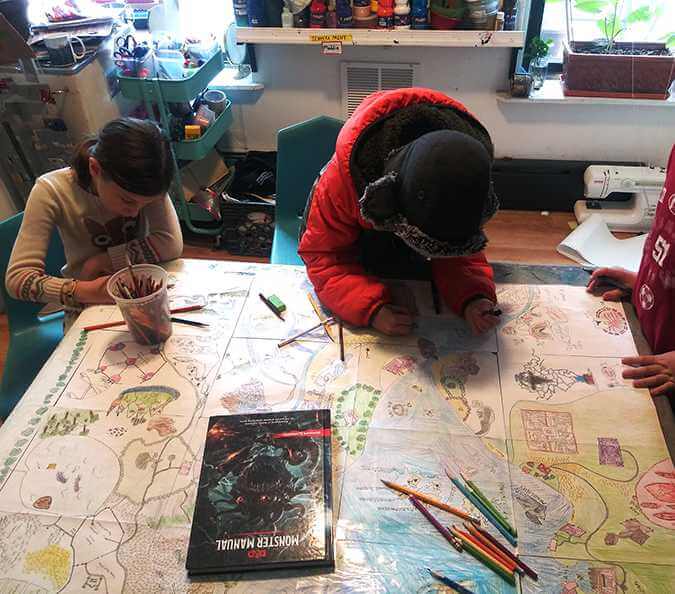
I heard of another example of ethics in role playing from my friend Ben Krieger who unschools his two daughters. The three have become engrossed in playing Fairplay together, and Ben has started adding elements of political current events into their game. In June, they broadcasted one of their games over Facebook Live. The adventure started out down the barrel of a gun at the U.S. border to Mexico and took them onto a Death Train ride and then over to the White House, where they had to convince Donald Trump to stop the hatred. Taking such a serious and dark topic like that and turning it into a game almost sounds insulting, but these are Ben’s own children he is playing with, who know they are in a safe space with their father and that it’s a game they have played many many times before that they can now take into new directions. Gamifying the topic gave Ben’s daughters a safe place to discuss traumatizing real life issues and to try to talk out solutions. Augusto Boal used a similar technique in Theatre of the Oppressed, a method of acting where people can try to work out solutions to serious issues impacting their lives.1
Intention
Progressive educators may consider role playing games as a great method of incorporating all sorts of academic subjects into a play-based atmosphere. Games like D&D and Fairplay teach collaboration, narrative storytelling, confidence, problem-solving, reading, writing, arithmetic, ethics, and even history and current events. And progressive educators and parents have been doing just that, setting up role playing game scenarios as a way to make learning more fun. In New York City, and elsewhere, there are a number of after school stores and programs set up in such a manner, where young people play a game and “unlock” prizes and skills for academic learning. For role playing games to remain self-directed, the intentionality must be about fun, not learning. A. S. Neill says it best, “I am not decrying learning. But learning should come after play. And learning should not be deliberately seasoned with play to make it palatable.”2
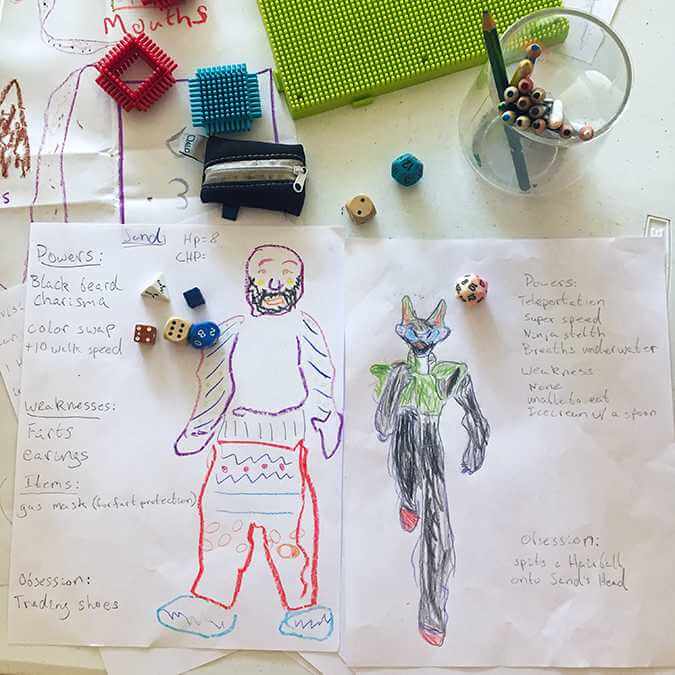
An actual conversation I had with a progressive educator illustrates my point: years ago I was playing a game of Fairplay with a group of children roughly around the age of seven at a democratic free school I had started. I was looking for adult volunteers at the school at the time and a retired Montessori school teacher we will call Evelyn was observing for the day to see if she was interested in volunteering. In the game, for whatever reason, the young people involved all decided to go to Spain. A few rounds into them being in Spain, Evelyn asked if she could speak with me in the hallway for a moment. Evelyn said, “I noticed that in the game you went to Spain. I also noticed that there is a world map up on the wall right behind where you were playing... why didn’t you take the opportunity to point out Spain on the map? It would have been a perfect opportunity, don’t you think?”
“Because... no one asked where Spain is,” I answered. The thought had not at all crossed my mind to show them Spain on the map. And in all honesty, had I thought of it, I may have asked if anyone wanted to see where Spain is located, but I was much too involved in the story to have considered it. And likely, such an offer would have broken stride in our narrative and raised objections. The point is, Evelyn was looking for a teaching moment, and I was looking to play a game with kids.
I am certain that it’s this genuineness that has me playing role playing games three days a week with young people who are craving for more. I did just have a passionate conversation with an eight and a ten year old about how we could use red shifting as a way of measuring distance between stars in our game to get to the next planet. How is that different from the teaching moment of Spain on a map? I may not be able to put my finger on it exactly, but I have a sense, just as I cannot definitively explain a healthy self-directed environment, but I know one when I see one. I know that when it is genuine it comes from the young people, not from me. And it has a wonderful structure to it that can be pulled down at any moment and rebuilt or left undone by all of the contributors, just like D&D, serious day or not. And it has so much to do with starting with our imaginations and working together from there in cooperation.
When entering upon a scene in D&D, the game master often says the infamous phrase, “roll for initiative!” This means, you’re being attacked, roll a die to determine the pecking order in combat. Although adults can offer frameworks and their own experience to young learners, it takes the initiative of the learner to dictate their own path that makes a self-directed space healthy. Role playing games are one such framework, offering wonderful opportunities to create a caring community that learns and imagines and lives together as a unit.
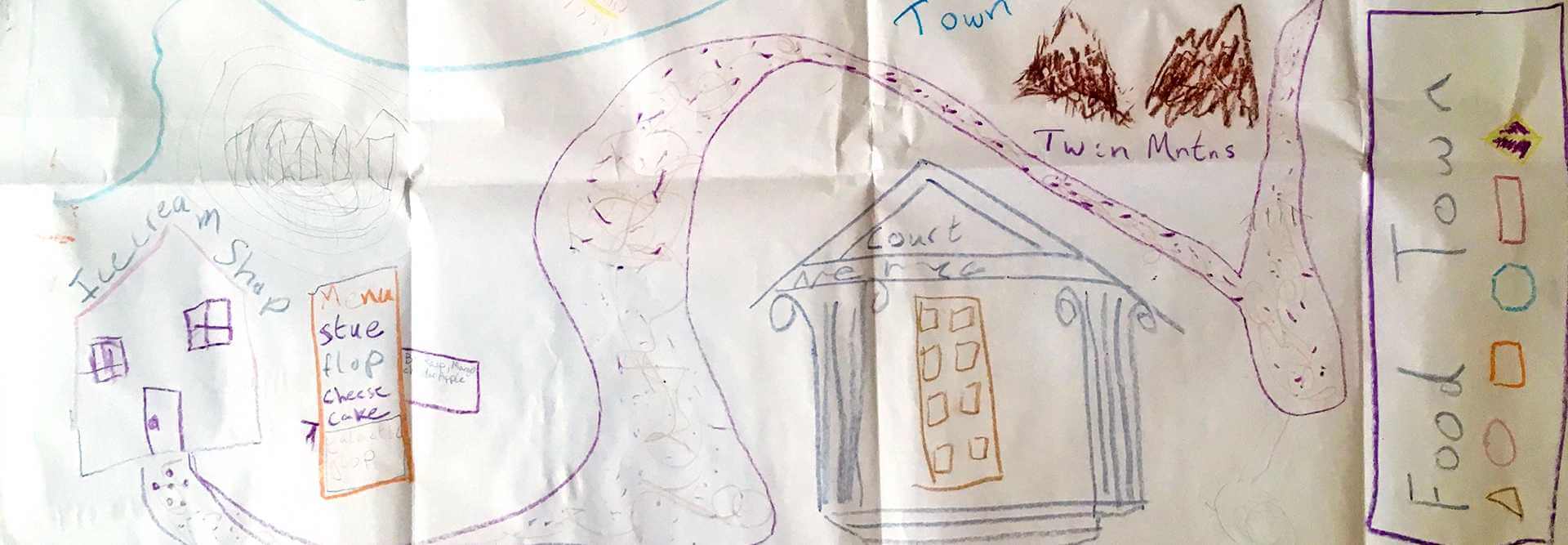
[1] Ben is a soundscape musician, combining sound clip samples and music together. He has recently been using his games of Fairplay as part of his music. Recordings can be heard on his website, Broken Window Garden, including “Bunnies and Trumps, Bunnies and Trumps,” the Fairplay story just mentioned. I have been playing some of Ben’s Fairplay inspired music for some of the young people at Brooklyn Apple Academy.
[2] Vaughan, Mark, et al. Summerhill and A. S. Neill. Open University Press, 2006.
[3] It’s also highly doubtful that any of these young people would never find out where Spain is when the time comes that they desire such information.
If you enjoyed this article and feel called to give back to ASDE, here are ways you can support our work:
- Donate money
- Share our content with others! Click one of the buttons above to easily share on Twitter, Facebook, or email.
- Consider becoming a Contributor for Tipping Points
Tipping Points Magazine amplifies the diverse voices within the Self-Directed Education movement. The views expressed in our content belong solely to the author(s). The Alliance for Self-Directed Education disclaims responsibility for any interpretation or application of the information provided. Engage in dialogue by reaching out to the author(s) directly.


